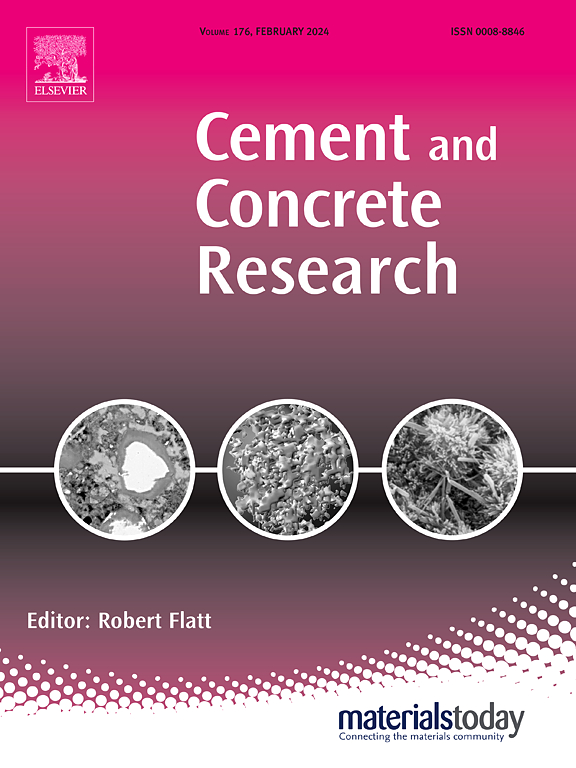通过准原位XRD定量研究温度对贝利石水化动力学的影响
IF 13.1
1区 工程技术
Q1 CONSTRUCTION & BUILDING TECHNOLOGY
引用次数: 0
摘要
富白铁矿水泥是一种很有前途的低碳材料,但其主要成分硅酸二钙(ββ-Ca2SiO4)的水力反应性有限,仍然是一个挑战。本研究介绍了一种利用准原位x射线衍射(XRD)研究ββ-Ca2SiO4等低反应性材料的反应动力学和加速策略的新方法。通过同时分析预固化和新鲜样品,该方法以降低时间分辨率为代价减少了测量时间。将该技术应用于ββ-Ca2SiO4浆料在21 ~ 80℃的水化过程中,可以深入了解其温度依赖性溶解过程及其表观活化能(AAE)。估计的AAE为49±3 kJ/mol,与现有数据一致,支持了白石水化的限速步骤可能根据材料的物理性质而改变的观点。通过提供特定阶段和时间分辨的数据,该方法可以作为设计科学策略的有用工具,以加速富贝利石胶结物的水化。本文章由计算机程序翻译,如有差异,请以英文原文为准。
Quantifying the effect of temperature on belite hydration kinetics through quasi in situ XRD
Belite-rich cement is a promising low-carbon material, yet the limited hydraulic reactivity of its primary component, dicalcium silicate (-Ca2SiO4), still poses a challenge. This study introduces a new approach to examining the reaction kinetics and acceleration strategies for low-reactivity materials like -Ca2SiO4 using quasi in situ X-ray diffraction (XRD). By simultaneously analyzing pre-cured and fresh samples, the method reduces measurement time at the expense of lowering temporal resolution. Applying this technique to hydrating -Ca2SiO4 pastes from 21 to 80 °C provides insight into the underlying temperature-dependent dissolution process and its apparent activation energy (AAE). The estimated AAE of 49 ± 3 kJ/mol aligns with existing data and supports the view that the rate-limiting step of belite hydration may change based on the physical properties of the material. By offering phase-specific and time-resolved data, this method serves as a useful tool in devising science-informed strategies to accelerate hydration of belite-rich cements.
求助全文
通过发布文献求助,成功后即可免费获取论文全文。
去求助
来源期刊

Cement and Concrete Research
工程技术-材料科学:综合
CiteScore
20.90
自引率
12.30%
发文量
318
审稿时长
53 days
期刊介绍:
Cement and Concrete Research is dedicated to publishing top-notch research on the materials science and engineering of cement, cement composites, mortars, concrete, and related materials incorporating cement or other mineral binders. The journal prioritizes reporting significant findings in research on the properties and performance of cementitious materials. It also covers novel experimental techniques, the latest analytical and modeling methods, examination and diagnosis of actual cement and concrete structures, and the exploration of potential improvements in materials.
 求助内容:
求助内容: 应助结果提醒方式:
应助结果提醒方式:


